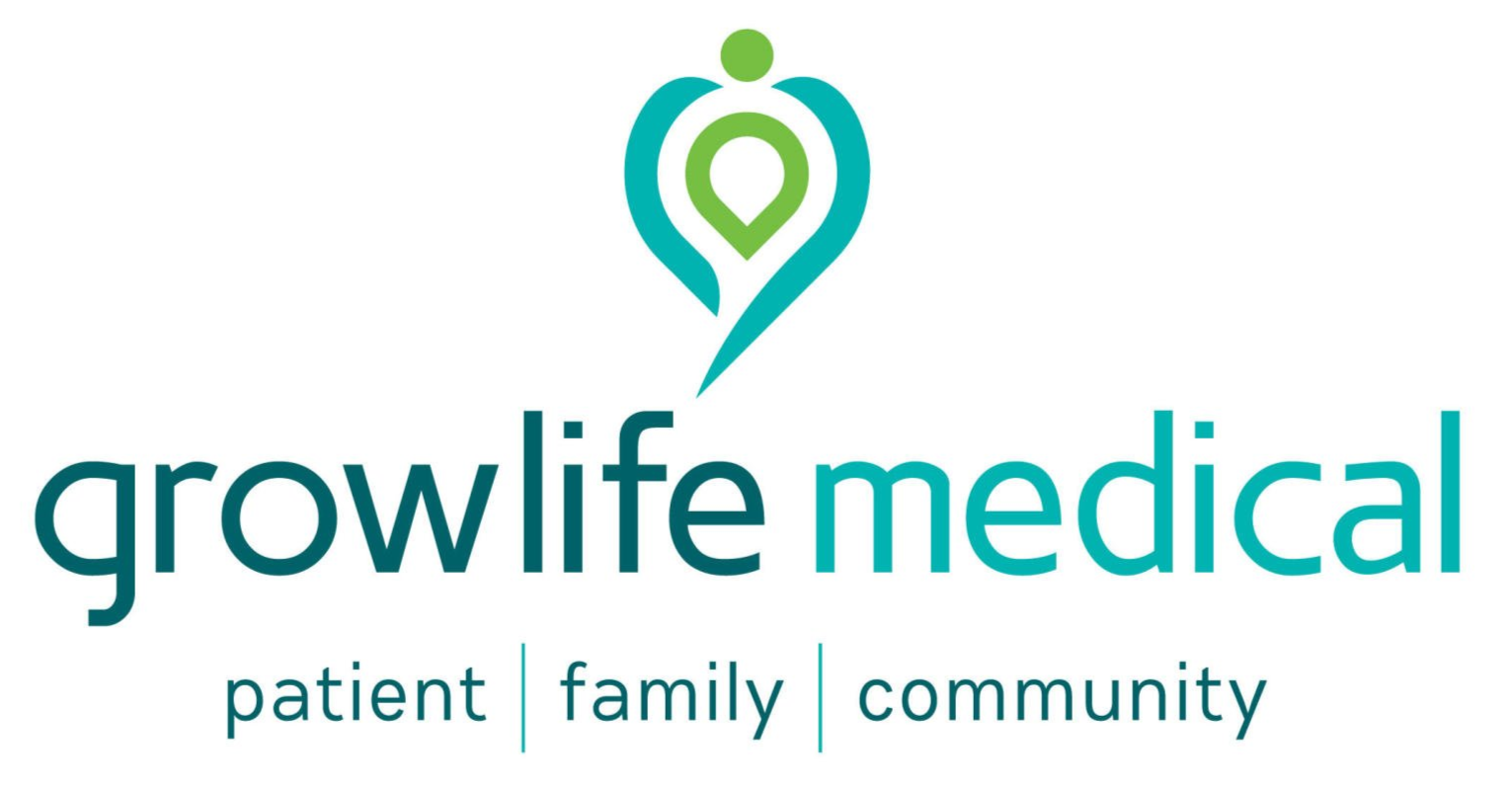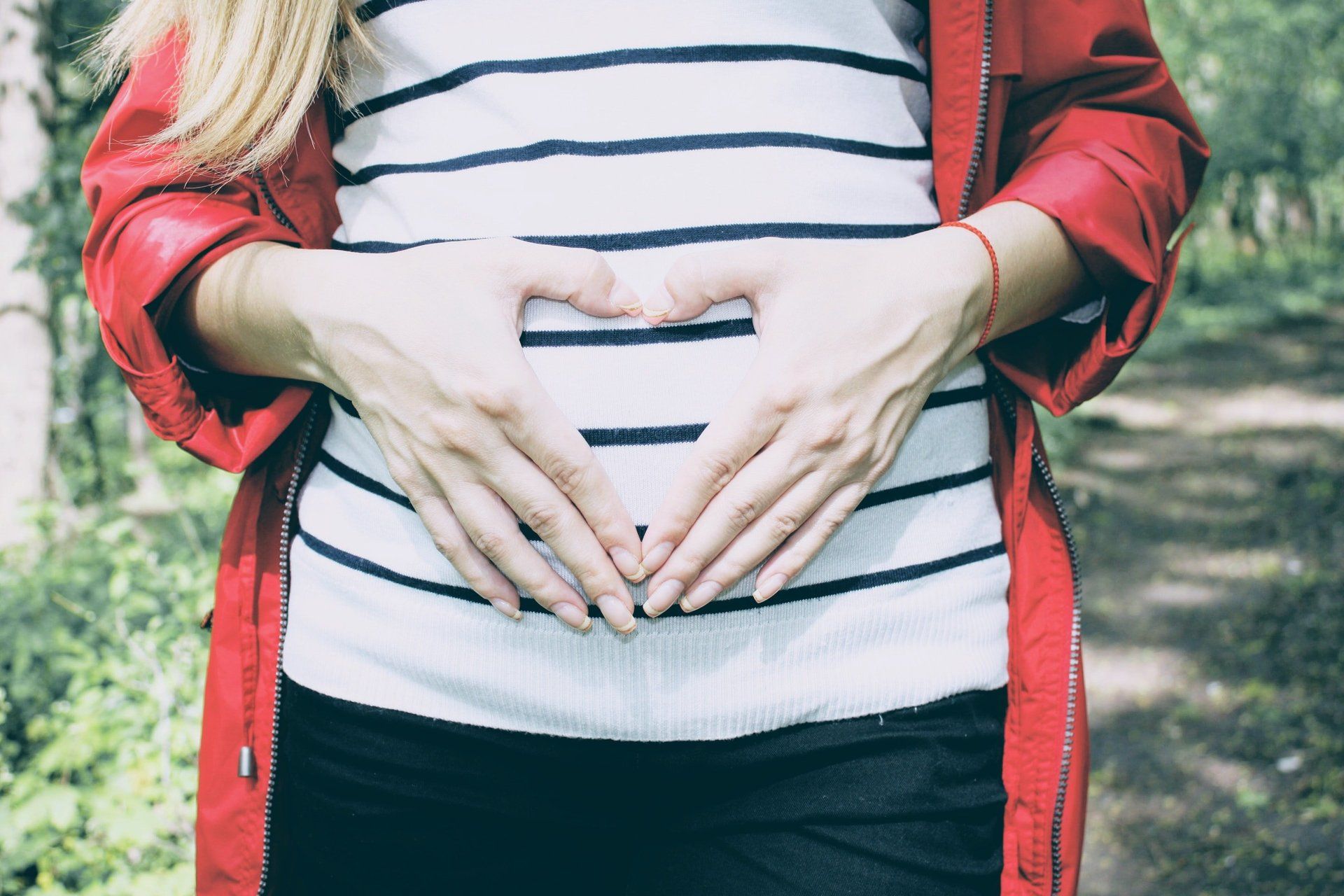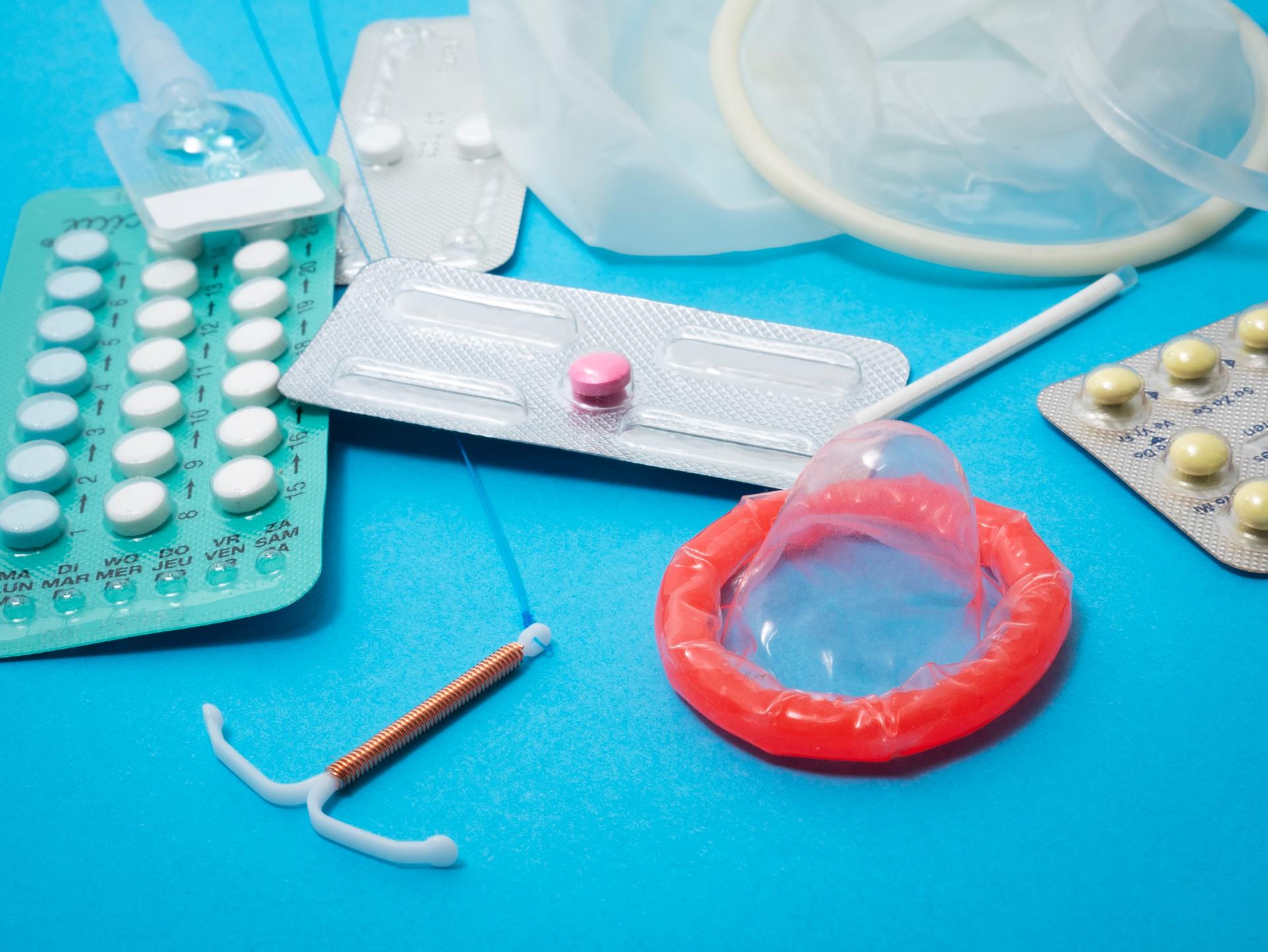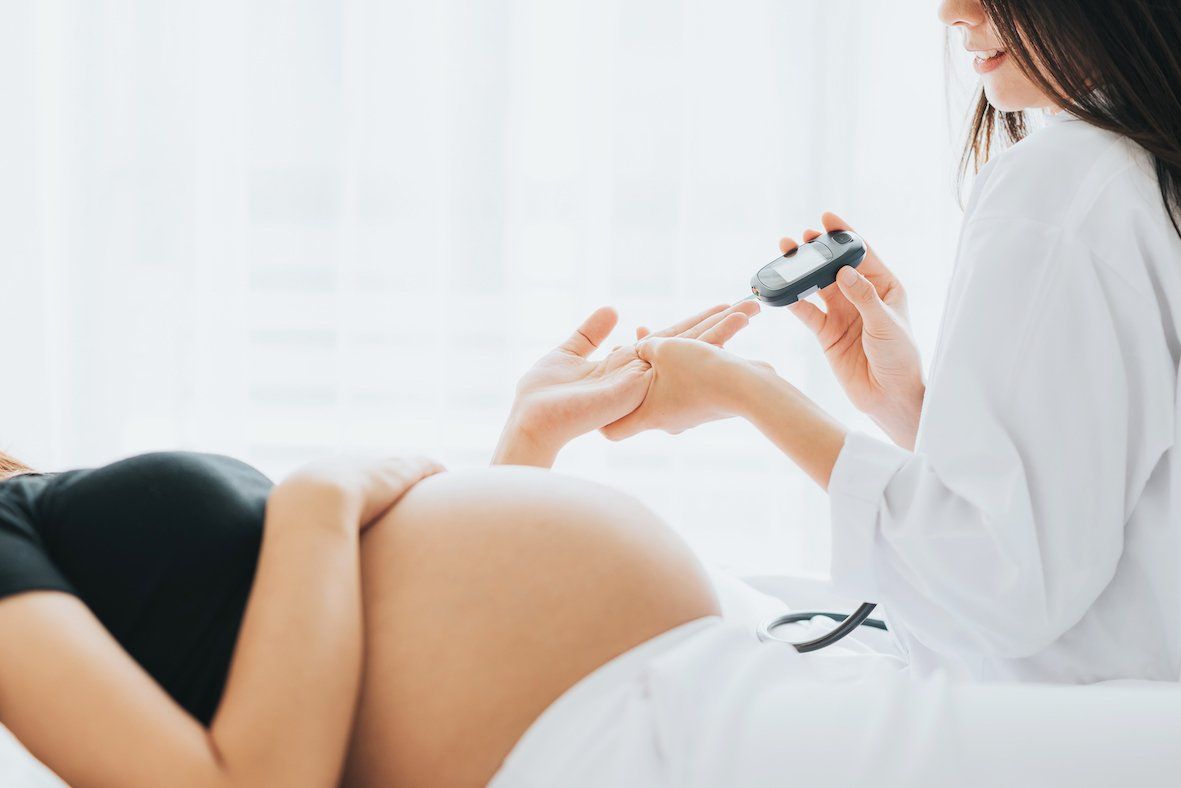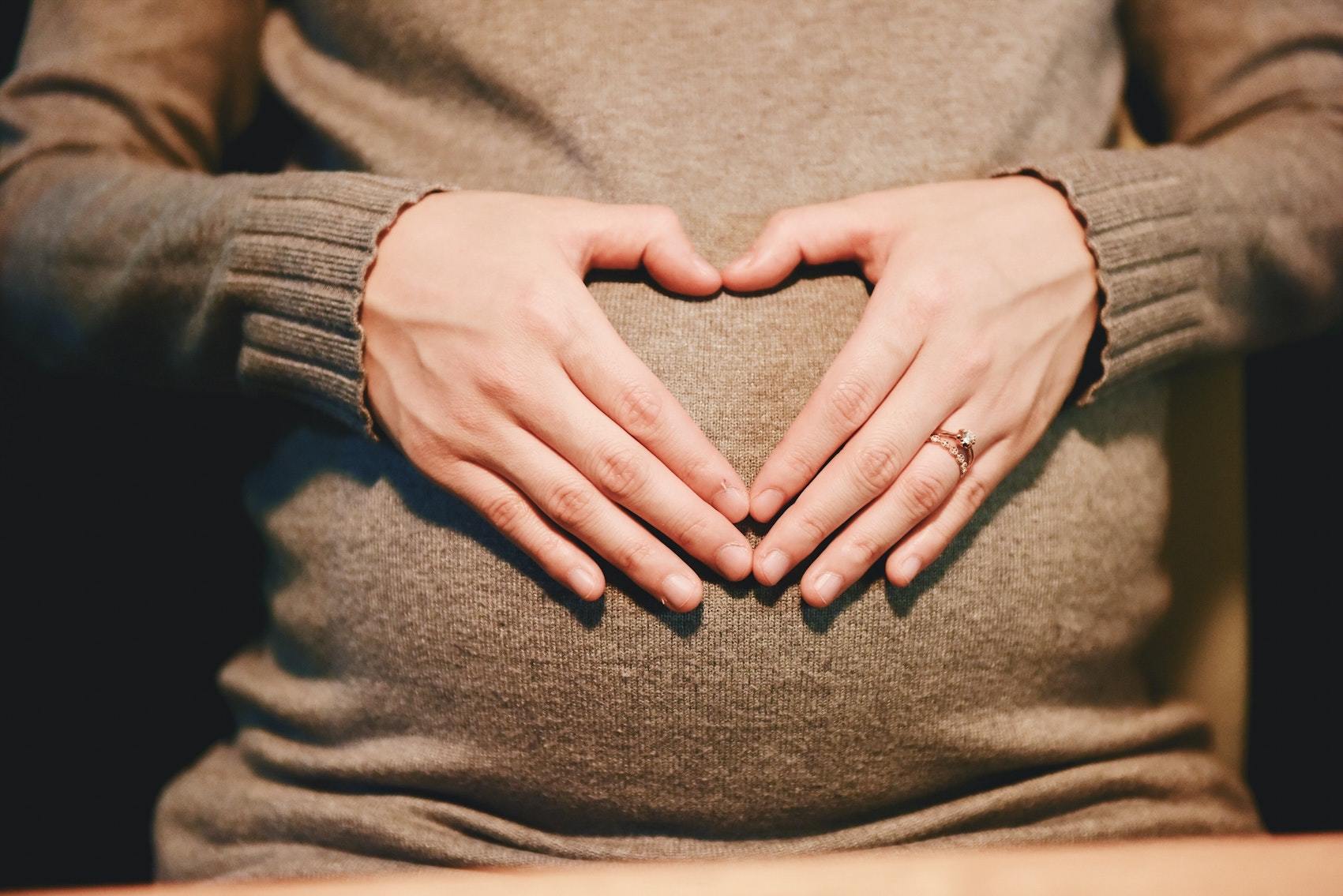Low Iron in Pregnancy
Have you been feeling weak and exhausted during your pregnancy? If so, it maybe a symptom of low iron in pregnancy. When you’re pregnant, you must produce more blood to support your developing baby. This requires around 50% more red blood cells to carry oxygen to your tissues and those of your baby!
When iron deficiency is significant, you might become anaemic, where your blood may contain fewer red blood cells than normal. Or, the red blood cells you have may not have sufficient haemoglobin. Haemoglobin is an iron-rich protein which is responsible for carrying oxygen throughout your body. As your iron levels drop, you may be unable to produce enough red blood cells to meet your body's requirement - causing anaemia.
Don’t worry though, iron-deficiency anaemia is surprisingly common during the second and third trimesters. And it is usually easily fixed. By introducing some supplements and minor dietary changes, you can have a stress-free pregnancy.
Growlife Medical are experienced in treating anaemia in pregnancy. Please contact us today for advice.
What is Anaemia in Pregnancy?
Anaemia in pregnancy occurs when your body struggles to produce sufficient red blood cells to support your developing baby. Each pregnancy requires around 1000mg of iron, contributing to the production of around 50% more red blood cells, and your baby's growing body. Remember, your baby will weigh around 3kg, and your blood volume expands significant to meet the requirements of your uterus and placenta, and prepare for birth. This high requirement, and a cap on the amount of iron your body can absorb each day, means your iron levels can fall. If you suffer from low iron levels, you may be unable to produce sufficient red blood cells - leading to iron deficiency anaemia.
Iron deficiency anaemia is the most common anaemia type experienced by pregnant women. It is commonly seen in the second or third trimesters. Iron deficiency can be detected on a simple blood test during pregnancy, and is best assessed by looking at the Ferritin level. Anaemia is detected in a routine antenatal blood test called a Full Blood Count. Your full blood count may show fewer red blood cells than normal, or your red blood cells may not contain adequate haemoglobin levels. The best way to assess for anaemia is by looking at the Haemoglobin level, often referred to as Hb. Haemoglobin is an iron-rich protein which carries oxygen from your lungs to the rest of your body, and iron contributes to many cellular processes. Iron is important to your health, and your baby's health. However, with some dietary changes and vitamin supplementation, you can still have a healthy pregnancy.
Causes of Anaemia in Pregnancy
Anaemia is extremely common during pregnancy. The leading causes of anaemia in pregnancy are due to a mismatch between intake and the nutritional demands of your pregnancy. Deficiencies can affect the number of red blood cells your body produces and how healthy they are. There are three main causes of anaemia among pregnant women. These include:
- Iron deficiency – If you’re pregnant, the total volume of blood in your body increases by over 50 per cent. This ensures there is an adequate supply for you and your growing baby. If you suffer iron deficiency anaemia, your haemoglobin levels decrease due to a diminished iron supply.
- Vitamin B12 deficiency – Vitamin B12 helps produce healthy red blood cells. B12 deficiency anaemia occurs when you don’t consume enough Vitamin B12 or have difficulty processing it. Vitamin B12 deficiency is commonly seen in those with a Vegan diet.
- Folate deficiency – Whilst anaemia from folate deficiency is uncommon in pregnancy, higher folate intake is essential for a healthy pregnancy. Folic acid is a vitamin vital for preventing neural-tube defects (spina bifida), and all women are recommended to take supplementary folate prior to falling pregnant. If you’re at higher risk of your baby having a neural tube defect, your doctor will recommend taking a higher dose folate supplement before you fall pregnant. This is most commonly those taking epilepsy medication or with a history of having a baby with a neural tube defect.
Is Low Iron a Sign of Pregnancy?
Whilst low iron commonly develops in pregnancy and commonly causes fatigue, one wouldn't generally consider it a sign of pregnancy. However, there are some signs which may indicate you are expecting. One obvious sign is a noticeable increase in fatigue. As fatigue is a common sign of both pregnancy and iron deficiency, the way you feel might be quite similar. Later in pregnancy, you might experience a decrease in iron levels. Low iron can manifest itself in different ways. Symptoms can include:
- Fatigue
- Extreme malaise (i.e. weakness)
- Pale skin
- An irregular heartbeat
- Shortness of breath and more
There is significant overlap between the symptoms of pregnancy and those of iron deficiency. Fatigue is the most obvious. Constipation is a symptom of pregnancy, and also a side effect of oral iron supplements. A faster heart rate and shortness of breath are symptoms of both pregnancy and iron deficiency. Changes in food preference are also symptoms of both. Read more about symptoms of pregnancy and how to manage them.
One of the most specific symptoms of iron deficiency anaemia is frequently overlooked. Unusual food cravings can be a sign of low iron levels. You might lose appetite, or may be craving strange food combinations, for example foods which don’t normally go together. Or, the foods you love may seem revolting to you. In rare cases, pregnant women are even known to desire non-food items, like clay, ice or even dirt. This symptom is known as pica.
It’s important to remember, though, that low iron itself isn’t a clear indication of pregnancy. If you’re concerned, contact your doctor today.
Anaemia in Pregnancy Guide
Pregnancy brings about many changes, both physically and emotionally. However, as many of these changes are gradual, they tend to go unnoticed at first. Iron deficiency anaemia in pregnancy is a classic example of this. As the volume of blood in your body increases, so too does your requirement for iron and other vitamins needed to make haemoglobin. Many pregnant women do not have sufficient iron stores to cope with the second and third trimesters. When this occurs, anaemia develops.
Due to a lack of iron, many women experience mild anaemia while pregnant. In fact, between 15% and 25% of all pregnant women will experience mild iron deficiency anaemia.
Fortunately, though, it can be easily treated if caught early. Your doctor or health provider can perform simple tests to determine the red blood cells in your plasma and the concentration of haemoglobin in your blood. If anaemia is detected, they can suggest an effective treatment plan.
Related articles:
What is Considered Severe Anaemia in Pregnancy?
While pregnant, anaemia tends to progress slowly, ranging from mild to severe. To be considered to have severe anaemia in pregnancy, the haemoglobin (Hb) concentration of your blood must register at 80 g/L or below. Most women with levels this low will have significant symptoms.
There tell-tale signs which suggest severe anaemia. These include:
- General malaise (weakness)
- Irritability
- Consistent fatigue
- Shortness of breath
- A frequent sore throat
- Headaches (located in the frontal region)
- Decreased appetite, and;
- Unusual cravings (i.e. non-food items)
The trouble is, during pregnancy, anaemic symptoms tend to progress slowly. This can lead to a delay in investigation and, ultimately, treatment. For this reason, many women do not seek medical attention until symptoms become quite serious.
If you experience these symptoms during your pregnancy, we recommend speaking to your doctor
or health care professional. The sooner your anaemia is detected, the sooner you can be properly treated.
Treatment of Anaemia in Pregnancy
If you do develop anaemia while pregnant, don’t worry. There are a variety of treatment options to help increase the production of healthy red blood cells. For the treatment of anaemia in pregnancy, your doctor may recommend several courses of action to treat your anaemia. These include:
- Vitamin supplements – While pregnant, your body needs twice as much iron as non-pregnant women to support your baby. This supplement can also prevent and treat diagnosed iron deficiency anaemia. If you require a higher iron intake, your doctor may suggest taking a separate iron tablet. As a general guide, pregnant women need 27 mg of iron each day.
- Dietary changes – Improving your iron level is very simple. By making some basic changes to your diet, you can boost your daily iron intake. Common sources of iron include red meat, chicken and fish. The iron from animal products, particularly red meat, is most easily absorbed. If you do not eat meat, leafy green vegetables, capsicum, strawberries and dried beans are also rich in iron. Consulting with our dietitian experienced in pregnancy is a good way to ensure optimal dietary intake. Taking vitamin C helps with the absorption of iron, so having a glass of orange juice with a steak would be a perfect combination!
- Considering an iron infusion - If you are already taking iron supplements but have ongoing iron deficiency or anaemia, your GP may recommend and iron infusion. If you have severe anaemia this treatment may even be considered first up. An iron infusion can be the quickest way to fix your iron deficiency, as an infusion can provide up to 1000mg of iron in one treatment - as much as the requirement for an entire pregnancy!
- A blood transfusion - we believe this treatment option is best avoided, as it is the most risky. Appropriately detecting iron deficiency during pregnancy and treating via other methods is important. This ensures your levels are good prior to delivery and the blood loss that often occurs.
Growlife Medical Are Anaemia in Pregnancy Experts
We Are Anaemia in Pregnancy Experts, with doctors, midwives and dieticians ready to help you through your pregnancy. Please chat to us at Growlife Medical.
We are also Brisbane's leader in
Telehealth Consults,
Growlife Medical
now provides easy and secure
Telehealth Consults with your doctor. You can easily
book online or over the
phone, for a video or phone consult with your GP. All
Growlife Medical Doctors
in all or our general practice locations are available for
Telehealth consults.
Other Articles On Pregnancy

Our hands connect us with the world; we use them to work, communicate and to care for not only ourselves, but others. With the welcoming of baby into the world comes the endless use of your hands – picking baby up, holding their head while breastfeeding, scooping formula, burping, the list goes on. This unfortunately takes a toll on your body, particularly your wrists. Due to repeated thumb and wrist movement needed while caring for baby and additional factors like hormonal changes and fluid retention, mums are particularly prone to developing a painful condition called De Quervain’s tenosynovitis (also known as Mummy or Mother’s thumb).

The birth of my son split me in two. It happened gradually, then suddenly. As far as children go, he was dearly wanted and now that he is here, he is dearly loved. I’ll come back to the part about being split in two – because sometimes it’s fitting to take it back to the very beginning. June 2016. I was working in a stressful job. A gay woman stuck in a religious private school. After two years of loyal service, and after witnessing many fellow staff members take leave to undergo fertility treatment, I approached my boss requesting the same. “Sorry, I’ll have to get back to you. No one has done this before.” “Um… what about Selina, and Amanda, and Jade?” “No – I mean, as a gay woman. This will be a precedent.” “Right.” It took her six weeks and in that time, she deliberated with members higher up in the church to vote on what was the best way forward. They even prayed about it, like the God almighty would provide insight on my personal circumstances. “I’m sorry, but the best I can offer you is unpaid leave and you have to take it in term three. The rest of the year is too busy. You also have to apply at least a month in advance.” I looked at her dryly. “Do you know how periods work?” Evidently not. In the months that followed, I timed my IVF appointments cleverly around the school day. My doctor was willing to see me at 5am, which meant I didn’t have to tell my boss. When the big day of egg pick up arrived, I needed the whole day. I rang my boss. “Yeah, I’ve got a migraine. I’ll send my planning in. See you tomorrow.” She suspected nothing. “When you wake up from the egg pick up, the number of eggs will be written on your wrist,” the doctor said. “Now just lay back. Soon, you will fall asleep…” I counted back from ten. When I woke up, there were six circles drawn on my wrist. Six! I was 26 years old and I got a measly six eggs. I was despondent. In the days following, our little future babies were placed in dishes with donor sperm. There, they made the fateful journey to conception. Each day, I called to see how my dish-babies were doing. Six. Five. Four. Three. Two. Two! After all that effort, money, time, stress, and hormones, we got two embryos. One barely made it to freeze and was considered unviable for pregnancy but was placed on ice all the same. “We are not doing part two of this process until you find another job,” my wife, Natalie, had said. It took me over a year, but I finally found another job – in a state school. I loved it. It was inclusive, and I became part of the furniture. I took a paid sick day, and we went back to our clinic. When the day of transfer finally came, I laid back comfortably as my doctor readied his implements. “This is purely diagnostic. It is unlikely to work. Don’t do anything differently, just live your life.” “Okay.” He spread my legs and inserted the syringe. As he did, an entire waterfall of emotion washed over me. I sobbed. It was finally happening. But it might not work! “Are you okay? We’re done here.” “Yes, I’m fine,” I sobbed. He patted my back. “Best of luck!” As we turned and left the clinic, I realised I had a two week wait before me. “Don’t pee on any sticks,” was the advice given to me by a friend. By day four, I caved. I peed on a stick. I sat anxiously on the toilet, tapping the test like I was trying to get ink out of a pen. About five minutes later, a slight line appeared. I kept my obsessive behaviour to myself. I didn’t even tell my wife about that first pee-stick. With every day that passed, I peed on another stick. By the end of the two weeks, I had confessed to my wife and we had a bag full of sticks, each line appearing darker than the last. They clattered in the bag, as we emptied them every day and lined them up like assembly line soldiers. It was amazing, the first signs of the miracle of his conception. My luck seemed to continue after the easy conception. I stayed relatively slim throughout my pregnancy, didn’t have any sickness, and I managed to work until I was 34 weeks along. Sooner or later, though, I knew my luck was going to run out. “What I’d really like to do is give birth in water.” My midwife jotted this down and explained that it may be possible if a bath was available. Perfect! Mere weeks later, the day finally came. I was four days overdue and it was time to see what was going on. The sliding doors at the Royal Brisbane hospital welcomed us. We sauntered down the corridor with giddy excitement. We were welcomed into one of the consulting rooms, where I lay flat on my back, wondering when they would suggest an induction. I had desperately wanted to go into labour spontaneously, but nothing had worked – vigorous sex, running, time in the bath. The midwife poked and prodded my belly. “The baby’s head is displaced, and I think he or she may be quite big. Had they told you that during the ultrasounds?” “Yeah. They said the baby is measuring ahead.” “How would you feel about being induced now?” I paused. “We don’t even have our bag packed.” “That’s okay, we can send your wife home to prepare everything. We can take you up to the ward shortly.” “I see you’ve expressed a desire for a water birth. Because we’re inducing you, that option will no longer be available.” I lay in a ball, awaiting the next step. Any time my stomach hardened with Braxton Hicks, I became excited that this could be it. “Nope, not yet.” The midwife shuffled in and out, checking on me, then going to do her rounds. The Earth inched towards evening as the sky lit up an intense orange, and then darkened; not that I could see it overly well through the hospital shades. As the darkness of night crept in, my labour was induced. My body had let me down – but I was not done. The contractions started and I knew I could do this. I crinkled my nose, proud of myself for how well I was handling the contractions. I laboured on for hours, with cervix dilating on schedule. As I started to become tired from a lack of sleep, the contractions intensified. It was a consequence of the induction hormones and it became unbearable very quickly. Nonetheless, I stayed strong. “Hold onto me.” Natalie said, as I stood in the birthing suite, leaning forwards every time I contracted. Time passed and I waved one midwife off as the next came in and wasted no time checking my cervix. “It’s 8cm. You’ll have a baby in t two hours.” I beamed! It was finally coming together. I continued to feel the tightening of my body with each contraction as they became more frequent. Soon, I felt a sharp, choking feeling around my middle. It knocked the breath out of me. “Is this normal?” “Here do you want some gas?” The midwife passed me the inhaler. I breathed in. “Ugh, it’s not working.” The midwife asked me to spread my legs so she could check my cervix. She looked inside me, then paused. “Your dilation has regressed…” she trailed off and walked out the door to get another midwife. “Hi, I’m Cheryl.” Another midwife walked in, accidentally brushing my forehead with her fingers as she turned around. “Holy smokes, you’re hot!” she exclaimed. She took my temperature. “Forty degrees!” About five minutes later, a doctor arrived. “You have an infection, which is why you have a fever and regressed dilation. Your baby’s head is still displaced. We need to call time on this labour for everybody’s safety.” “Just sign this consent form and we will take you off to the theatre.” I signed rapidly and a midwife came to remove my hormone drip. “Your contractions should stop now.” As soon as she said that, my contractions went from lasting around thirty seconds, to a continuous sensation. “Ahhhh!!! It won’t stop!” I screamed. They started to wheel me down to theatre, ready to prepare me for a caesarean section. When we got there, the doctor started to explain the spinal block. “We’re going to insert some fluid into your spine. Then we’ll put some water on your belly to see if you feel it. Then we’re going to cut just below your bikini line to deliver the baby. Do you want your wife to say if it’s a boy or a girl?” “Oh my God, stop talking!” I writhed in excruciating pain. The contraction that started when they took out the hormone drip hadn’t stopped. The doctor stabbed my spine and I remained curled into a ball with an oxygen mask on. I leaned towards Natalie and the doctor leaned into her ear. “You have to stay strong, for her.” My forehead was sweating and I couldn’t move. “Can you straighten out, please?” The doctor rolled me onto my back and patted just below my bikini line. The nurse poured a few drops of water on the area. “Oh my God, don’t operate!” I yelled. “Okay, we’re going to have to do a general.” The anaesthesiologist leaned in and inserted a needle, which I couldn’t feel above the contractions. It all happened so quickly. This was all completely out of my control now. I had to let go. I inhaled sharply and expressed my only wish. “Don’t tell her the sex of the baby before I wake up!” That was the last thing I remember as the curtain of unconsciousness fell down around me. The next thing I remember is that my eyes were too heavy to open and I felt disconnected from myself, like a butterfly outside of its chrysalis. Was I dead? I opened one eye. I could see the most perfect looking baby on my chest. No blood, no fluid, no bruises. “He’s perfect.” I exclaimed, making an assumption about the sex of my baby before drifting back into the woozy stream of unconsciousness. The next time I woke, someone was holding my baby up in front of my face. They swiftly yanked the nappy down to reveal the sex. “It’s a boy!” We had already named him Soren, for a boy or a girl. It hurt so bad, but I smiled. “Why are you crying?” I looked over at my wife, confused. “It was just a C-section. They do these all the time.” I assured her. “You don’t get it. I almost lost you.” “You lost almost half of the blood in your body. They had to stabilise you. It took a long time. Soren was fine, but you nearly died.” I felt like part of my emotional self was anaesthetised. I could see and hear my own mortality being shared around me, but I couldn’t feel myself hurting. It was completely numbing, as if I’d been sliced through the chest and I was watching my heart exist outside of it weeping and bleeding, but not feeling so much as a twinge. It was almost like my brain was dismembered from my body and I was merely a spectator. The mental impact of his birth raged on and I still feel it today. However, I could not have had my son under any other circumstances. This was his birth. As traumatic and as violent as it was, it brought him to us. Sometimes I still feel split in two, but together, we are family. Felix culpa. Make Sure you vote in the Grow Medical 2020 Essay Competition by going to our Facebook Page , and liking and sharing your favourite Story of Families. If this one is your favourite, tell us why in the comments, and share it by clicking one of the circle icons below. Otherwise, read on with this year's finalists entries...

Returning to exercise after having a baby can be daunting, and for many women, they are unsure of where to start or where to seek advice. Like so many other aspects of parenthood, there isn’t a simple rule. There are, however, some fantastic guidelines we can follow to help ensure a safe return to exercise and every day activities. The evidence directs us towards low impact, controlled activity in the first 6 weeks where we are aiming to maximise natural recovery and facilitate healing and gentle strengthening of the pelvic floor and abdominal muscles. Growlife Medical are experienced in caring for you after a pregnancy. P lease contact us today for advice.
